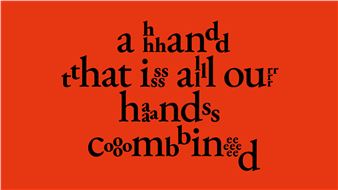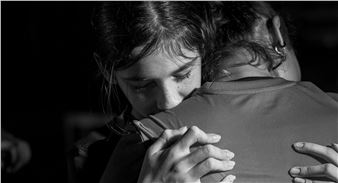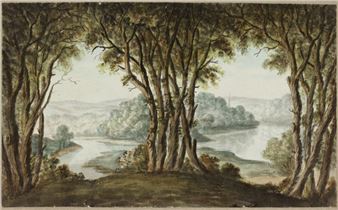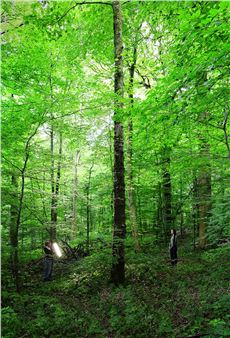Study for a Painting
Riffing off the title of David Bomberg's painting (presented in Gallery 4), Study for a Painting (Exhibition) proposes its own compositional study of the form and functions of an exhibition. Within this speculative space, the exhibition brings together a range of artworks that outline formal and media-specific concerns of painting, suggesting overlaps and drawing affinities between historical works and contemporary practices.
Situated alongside 5 artworks from the Hatton Gallery collection including Kurt Schwitters' Merz Barn Wall are new and existing artworks by 12 artists and lecturers from the Fine Art Department. The collective works highlight important pedagogies in practice-based learning, not least the agency of artist-teachers.
For the last 100 years the Hatton Gallery and its collection has been central to the Fine Art Department as both a space for presenting practice and a teaching resource inspiring and informing learning. The section of work by David Bomberg and Antoni Tàpies recognises the enduring agency of the collection as a primary source of encounter with physical artworks, whilst works by Mary Webb and Fred Brookes - both former students of the department - signify an interconnectivity between the past and the present.
Collection works serve as cornerstones around which exhibition has evolved, inviting dialogue and encouraging further associative connections between traditional practices to painting, picture making and contemporary practices.
Critic Isabelle Graw has suggested that painting has long since moved beyond a 'medium specificity'. Study for a Painting (Exhibition) invites a reflexive conversation around the conventions, definitions and limitations of what painting is and can be, offering paintings that both follow and break convention in their use of traditional medium and form, presented alongside practices which integrate a range of materials and techniques, blurring the boundaries between painting and other art forms.
As an experimental model and literal 'study for a painting' exhibition, the curatorial process prioritises speculative juxtapositions between artworks, informing surprising connections between practices and media.

Recommended for you
Riffing off the title of David Bomberg's painting (presented in Gallery 4), Study for a Painting (Exhibition) proposes its own compositional study of the form and functions of an exhibition. Within this speculative space, the exhibition brings together a range of artworks that outline formal and media-specific concerns of painting, suggesting overlaps and drawing affinities between historical works and contemporary practices.
Situated alongside 5 artworks from the Hatton Gallery collection including Kurt Schwitters' Merz Barn Wall are new and existing artworks by 12 artists and lecturers from the Fine Art Department. The collective works highlight important pedagogies in practice-based learning, not least the agency of artist-teachers.
For the last 100 years the Hatton Gallery and its collection has been central to the Fine Art Department as both a space for presenting practice and a teaching resource inspiring and informing learning. The section of work by David Bomberg and Antoni Tàpies recognises the enduring agency of the collection as a primary source of encounter with physical artworks, whilst works by Mary Webb and Fred Brookes - both former students of the department - signify an interconnectivity between the past and the present.
Collection works serve as cornerstones around which exhibition has evolved, inviting dialogue and encouraging further associative connections between traditional practices to painting, picture making and contemporary practices.
Critic Isabelle Graw has suggested that painting has long since moved beyond a 'medium specificity'. Study for a Painting (Exhibition) invites a reflexive conversation around the conventions, definitions and limitations of what painting is and can be, offering paintings that both follow and break convention in their use of traditional medium and form, presented alongside practices which integrate a range of materials and techniques, blurring the boundaries between painting and other art forms.
As an experimental model and literal 'study for a painting' exhibition, the curatorial process prioritises speculative juxtapositions between artworks, informing surprising connections between practices and media.
Contact details


 ARTISTS
ARTISTS















